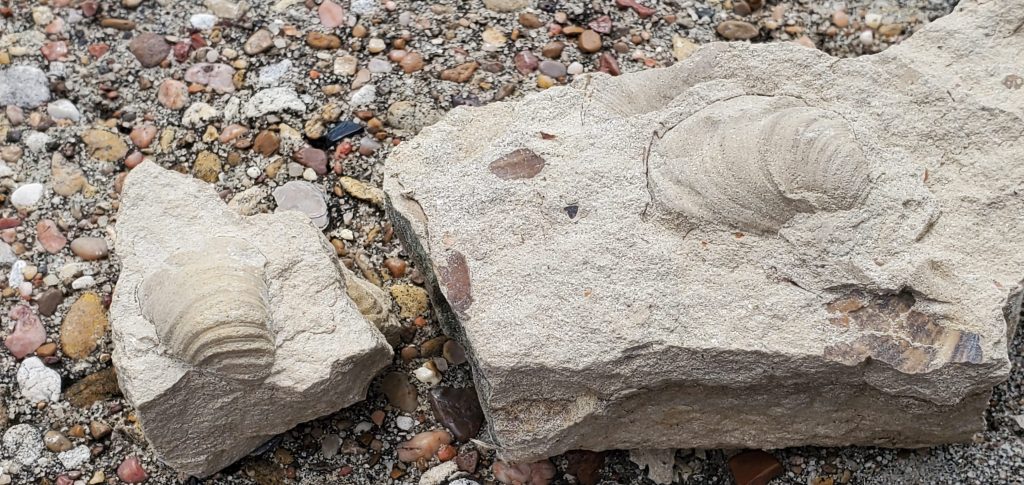Remember! It is your responsibility to know the rockhounding laws and regulations for each site you visit. It is also your responsibility to verify and gain permission to visit each collection site that is mentioned on this website. Always respect private property!
No too long ago my family and I relocated to the Waco area. If you haven’t been to Waco or the surrounding area, then I highly suggest you go ahead and put it towards the top of your “Places-To-Visit” list.
Besides hitting the usual tourist locations (The Silos), there are so many things to see and do here; kayaking the Brazos River, bass fishing on Lake Waco, horseback riding and of course…rockhounding.
When it comes to rockhounding, the central Texas, including Waco and its neighboring communities, offers a lot of different options.
But what about digging for fossils? Are there areas near Waco that are good for digging fossils? You bet there are.
I’m still fairly new to the area, but I’ve done some research and some asking around, and here’s what I’ve come up with.
Related:

Where To Dig For Fossils Near Waco Texas
1. Waco Research Pit
The Waco Research Pit (aka The Waco Pit) is probably one of the most popular places near Waco to dig for fossils.
A small inland sea covered what is now Waco, Texas during the Late Cretaceous era. What was left behind is fossilized evidence of a seabed teaming with life.
The fossils here are very small; nothing bigger than a quarter may be found. It was formerly a lagoon and has a plethora of ammonites and gastropods, as well as fossil shark teeth, sea urchin shards, and baculites.
There are a few pyritized fossils in this area, so cleaning them brings out their vibrant colors. However, since they contain pyrite, they are vulnerable to pyrite disease and must be preserved in a clean, dry environment.
The United States Army Corps of Engineers is in charge of this location and the only way to get in to look for fossils is with a pre-arranged permit, which is as easy to obtain as emailing their office or simply stopping by. Besides the permit there are no other fees or other restrictions to dig for fossils at this location.
You can contact the Army Corp of Engineers and learn more by going to their website here.
2. Whiskey Bridge
About 1 hour south of Waco, US21 crosses the Brazos River via the Whiskey Bridge. The area is an Eocene maritime site with an abundance of tiny gastropod shells, indicating it was formerly a marine location.
You should be able to find parking along the west side of the bridge. This is also where you’ll be able to access the dig site, which will be along the embankments.
As far as which tools you should take with you? All you really need at this site is a screwdriver to pry out the specimens.
As I mentioned, this site is found along the embankments along the Brazos River. So its important to check on the water level of the river. Many people report that it’s best to visit this fossil dig site when the water level is lower than 15 feet.
You can check the current water level for the Brazos river by following this link here.
3. Roadside Cutouts
Just North of the town of Gatesville along CR215 you will find multiple cutouts in the road that expose the chalky layers that contain fossils.
These sites that have been known to be decent producers of various types of fossils for rockhounds. Some of the types of fossils found in these roadside cutouts are urchins, gastropods and bivalves.
Keep in mind, however, that you must always have permission to dig or collect on private property. It is ultimately your responsibility to know if you are on private property or not.
4. Lake Whitney
Lake Whitney State Park is North of Waco, and it’s another great spot to look for fossils. The banks along the lake are teeming with them. Unfortunately, however, this isn’t a spot where you’ll be allowed to collect fossils.
The fossils tend to occur in rock formations and allow for easy viewing. While it’s unfortunate that the land doesn’t allow you to take fossils, the truth is that it means they’re well preserved and easily visible for future visitors.
Impressive fossils along the cliffs are the main draw, but it’s a beautiful area as a whole. It may make it worth it if you like to hike in addition to looking at ancient history etched in the stones.
While the collector may want to give a skip to Lake Whitney and its temptations, it’s definitely worth a trip for the fossil enthusiast. You can take a look at their guidebook to see if it sounds like a stop you want to make.
5. Creek and River Beds
The entire area surrounding Waco was once the bottom of an ancient ocean. This ocean sea bed was teaming with life. Fast forward to today and you don’t have to look very far for fossils once you’re in the Waco area.
You can literally walk any creek or river and find remnants of this ancient world that once existed here. The Brazos and Bosque Rivers are two excellent options for fossil hunting. If you time it right and kayak either of these two rivers while the water levels are low, you’ll easily find fossils. Just pay close attention to the exposed gravel beds and embankments.
Even the smaller creeks in the area are a great source for fossils.
Read More: Rock and Mineral Clubs In Texas
- Online rock and mineral club for collectors of all levels!
- Find community with like-minded rock and mineral enthusiasts.
- Monthly Giveaways!
- Free Access to Entire Digital Library of Products (current and future products)*


